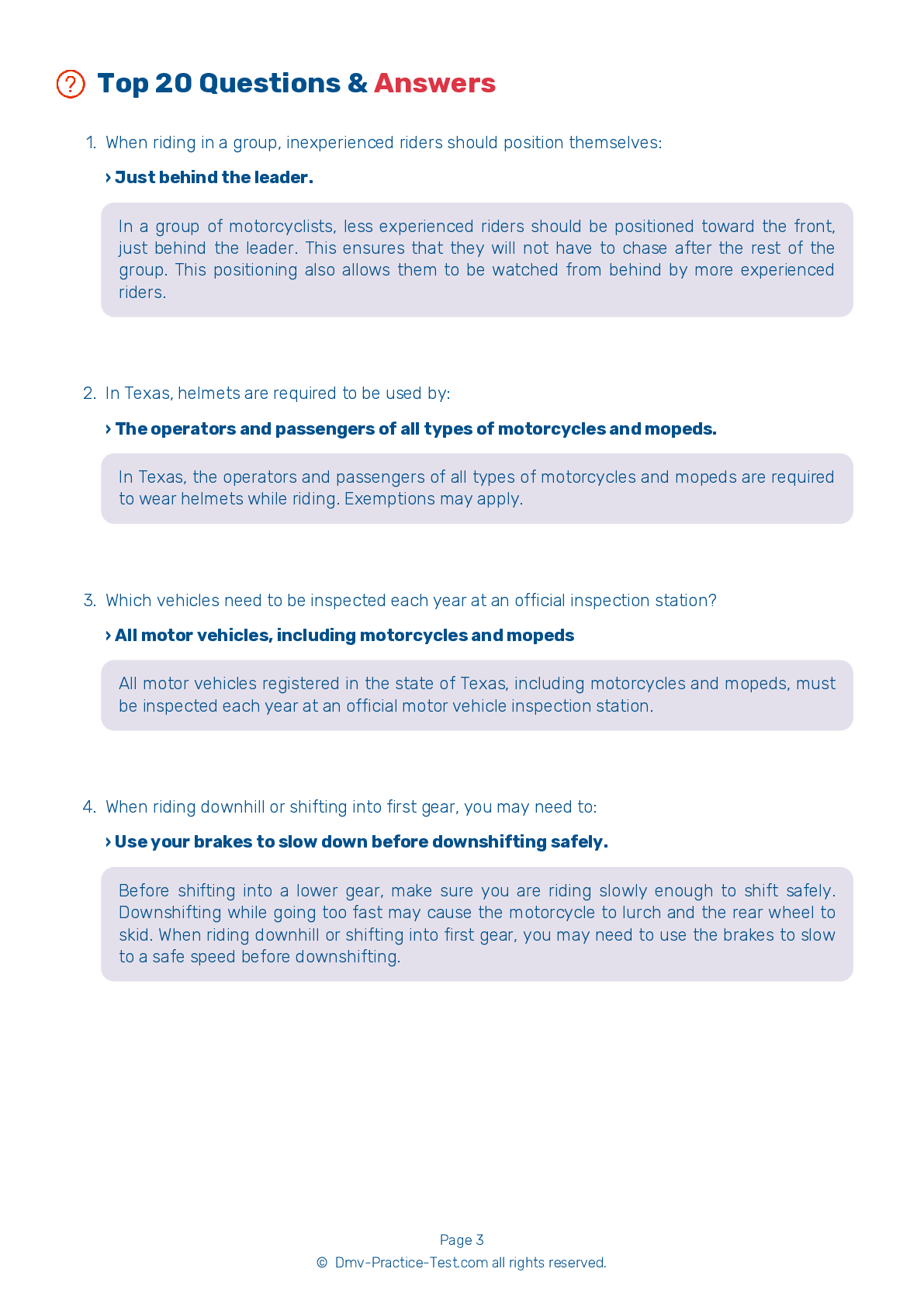Motorcycle Test | License TX 2025 | FREE Online Practice! #8
Take this FREE motorcycle test (license in TX 2025) to check your knowledge of the road rules. To improve your results, download a motorcycle handbook online, study theory, and practice for free on our website. Still worried about how to get a motorcycle license in Texas in 2025? Check our website for more sample tests, train as much as possible, and boost your grades!
1 . Passengers should:
Before riding while carrying a passenger, you should instruct your passenger to lean with you through turns and curves. They should hold onto your waist, hips, or belt.
2 . Maximum straight-line braking is done by:
Maximum straight-line braking is accomplished by simultaneously applying both the front and rear brakes without locking either wheel.
3 . When passing another driver, you should:
Get out of another vehicle's blind spot as quickly as possible. When passing another vehicle, you should move into the passing lane and accelerate past the vehicle.
4 . Impairment from alcohol:
As little as one drink can have a significant effect on the abilities that you need for safe riding. You can be impaired even if you are well below the legal blood alcohol limit. No amount of alcohol is safe to consume before riding.
5 . Which vest or jacket color would best help you to be seen?
Wearing brightly-colored clothing while riding will increase your chances of being seen. Bright oranges, yellows, reds, or greens are best and are preferable to drab or dark colors.
See the exact questions that will be on the 2025 Texas DMV exam.
99.2% of people who use the cheat sheet pass the FIRST TIME
Jeneen was tired of paying $5/gallon. She got herself a scooter that required the motorcycle license. She studyed the motorcycle test cheat sheet and passed her test the next day!
Christopher tells us how he knew nothing prior to obtaining the motorcycle study guide, and he only got one question wrong because he clicked on the wrong answer by mistake.



